|
Florida Torreya to Cowee Valley, NC
Private landowner, Lamar Marshall
LAMAR MARSHALL, retired from Cultural Heritage Director for Wild South - Cowee Office and webmaster of Cherokee Journey. 19-minute youtube VIDEO (2018): "Cherokee Now Episode 20 - Lamar Marshall, Research Director - Southeast Heritage Associates.
• LOCATION & ELEVATION: 2,200 feet elevation on the south-facing slope along Mica Creek, leading into Cowee Valley, which is 8 miles due north of Franklin, NC.
• SEED HISTORY: Lamar received seeds from the 2013 autumn harvest by Torreya Guardians. He used a hacksaw (and pliers) to scarify each seed, as physical or chemical methods of partially eroding tough seed-coats often accelerates germination....
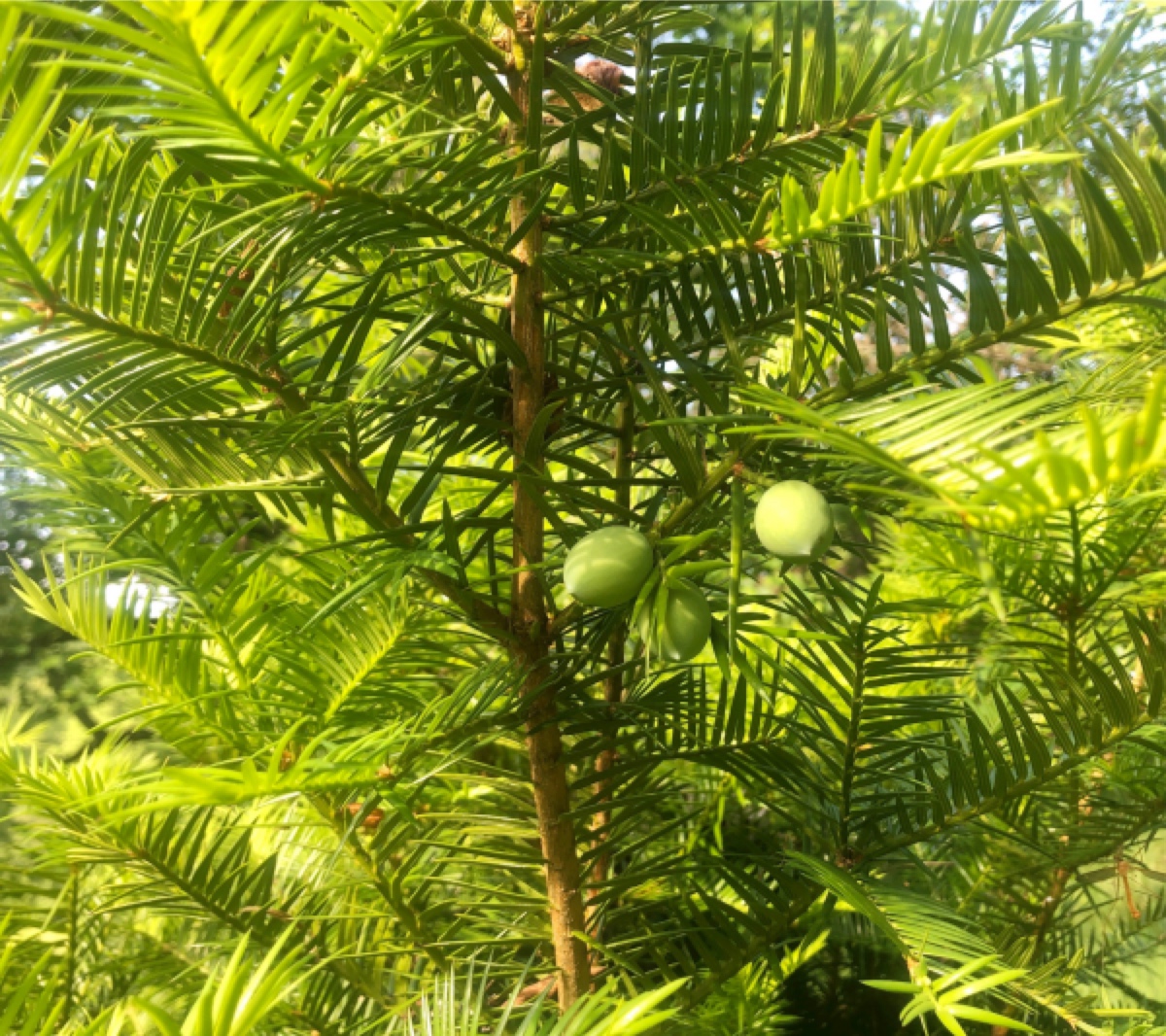
ABOVE: May 2023 - First year of seed production! |
|
... The seeds were grouped together in big pots for germination. None sprouted in 2014. But by spring 2015, 26 of those seeds had germinated. He transplanted the germinated seeds into separate 1/2 gallon pots.
By early May 2015, 11 of the 26 germinated seeds had growth visible above the soil surface.
Note: Torreya seeds often build elaborate roots before appearing above ground. Unlike small-seeded plants, Torreya's big seeds contain a lot of stored energy for growth before they must begin to photosynthesize.
Seedling emergence continued into autumn 2015, when 10 of the tiny plants were outplanted.
|
• PATTERN FOR PLANTING - Lamar chose an orchard style for planting: open ground next to his house with lots of sun. The intent is to maximize growth so that this grove can begin producing seeds for future seed distribution.
 |
|
Lamar Marshall uses Bio-Tone Starter Plus to ensure that his mixture of top soil, sterile potting soil, leaf litter, and a pinch of lime will offer the torreya seedling any of the mychorrizal fungal symbionts that it coevolved to associate with.
Lamar's terrier dog, Scout, does a fine job of chasing away the squirrels and eating the voles. Photo right is Scout looking out upon the full-sun planting of Torreyas. He gives a distinctive bark at rodents, signifying that he needs to be let out to do his job.
| |
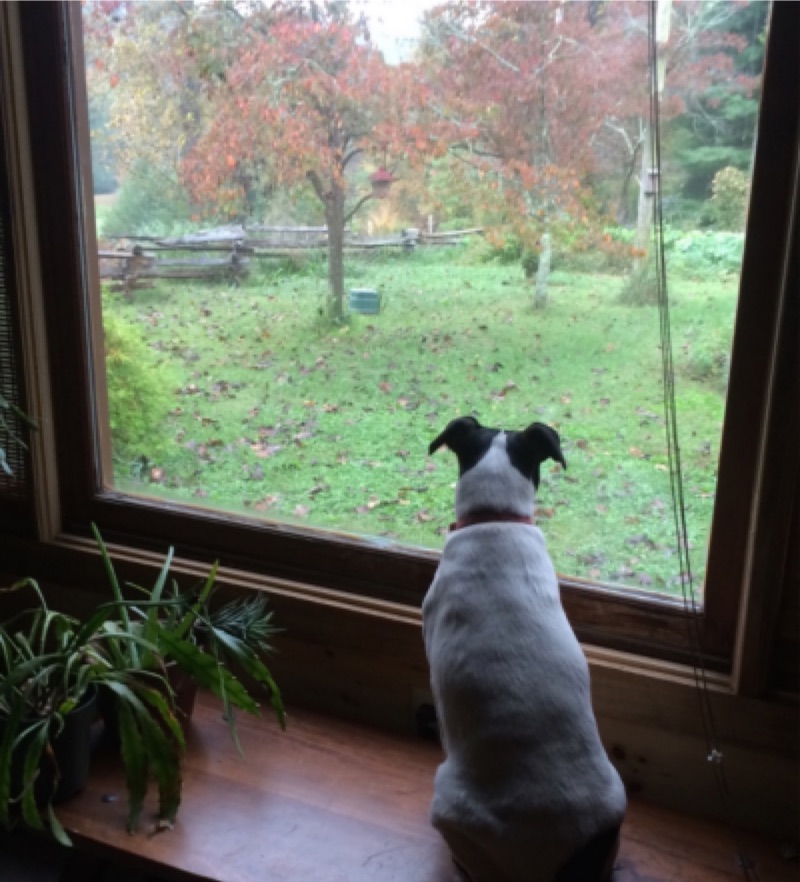
|
CHRONOLOGICAL REPORT
Autumn 2015 photos of the first stage of planting
ABOVE: Stakes mark the locations of 10 seedlings planted, autumn 2015, on this south-facing slope.
April 2017 photos of 2 of the 10 trees
April 2017 Lamar reports that all ten seedlings are thriving. Note how the growth form indicates a very sunny location. In shadier locations, Torreya adopts a more yew-like growth habit in its needle orientation.
November 2018 photos of 2 of the 10 trees
11 November 2018: "I lost a few trees this summer which just turned yellow, then brown and dead. Tried to lime and change PH but could not save them. Bad luck with the seeds I tried to sprout last spring. I have 4 thriving trees. The tallest is 38”; then 36”; another about 18”; and a younger about 12."
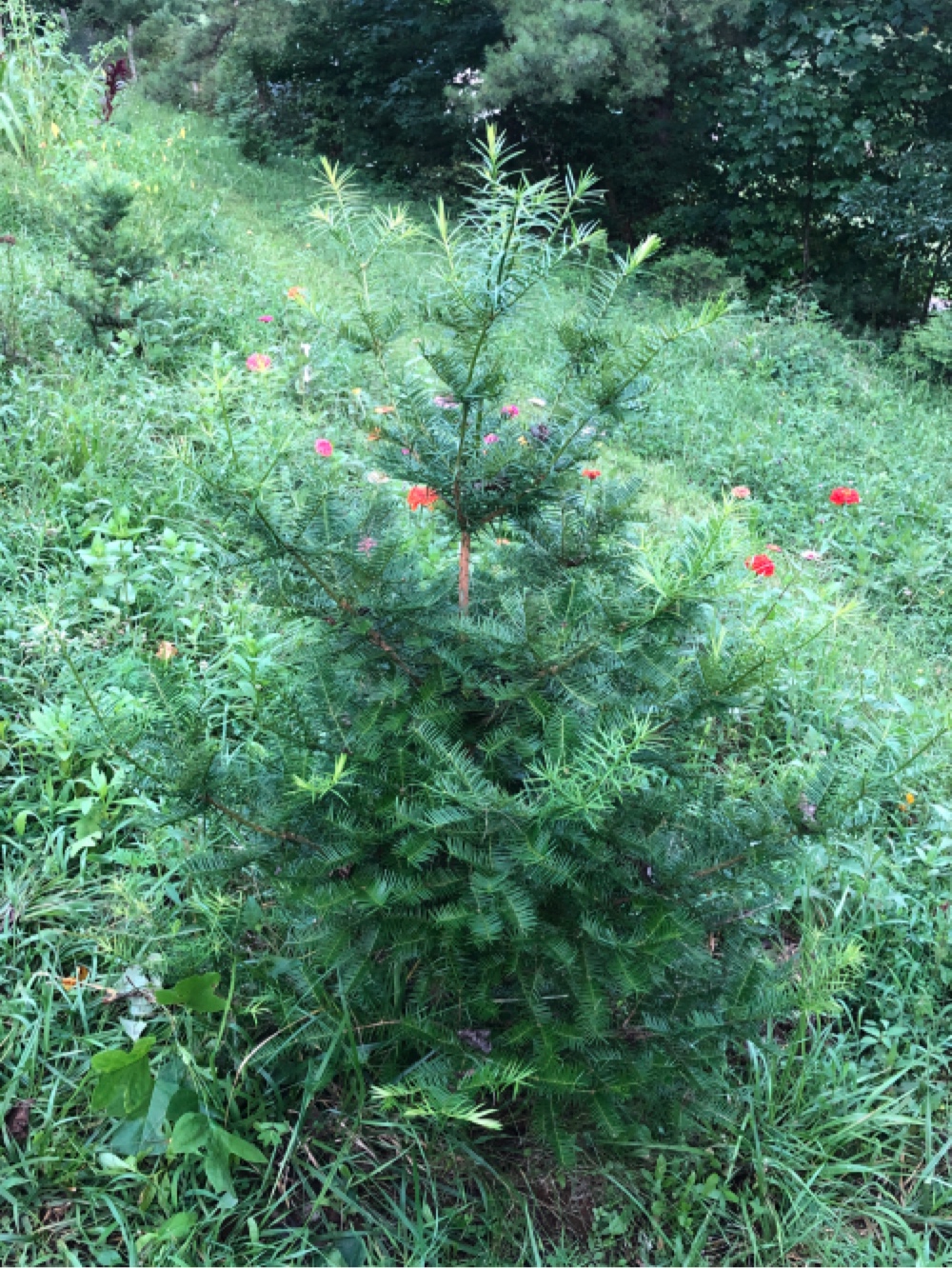
|
|
Summer 2020 update:
Six Torreyas still alive
This photo was taken mid-August 2020.
Notice in the upper left corner 2 more torreyas growing on this south-facing slope.
Because Torreyas are slow-growing, the only way they can maintain full sun for growing is where humans take care to mow, brushcut, or weed-whack their surrounds.
Lamar Marshall keeps this slope open by [fill in how you do it and how often].
|
May 2023: First year of seed production!
"I have six surviving Torreyas, a few of which are producing seeds for the first time."
October 2024: Second year of seed production
Photo documentation by JOSEPH GUITE 30 October 2024, who reports:
"Lamar Marshall (pictured in two photos below) showed me his five torreya trees. Three of them had fruits. One is still too small to be sure of its sex. The area had been in a drought for quite a while, and many of the still green fruits were drying, with the aril splitting to reveal the seed.
"A total of 27 fruits fell from the tree while we were examining the branches, so even though greenish they are surely ripe by this late in October. There were at least as many still hanging from the trees. He was in the middle of fixing his well pump but said he'd water the Torreyas once he was finished."
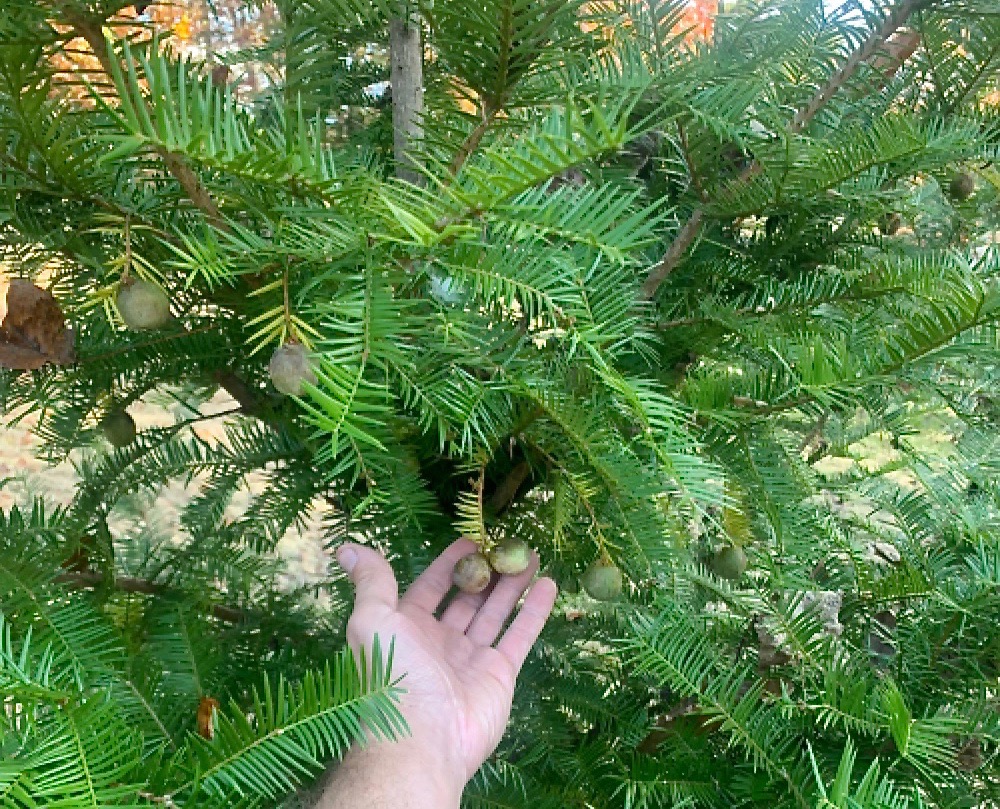
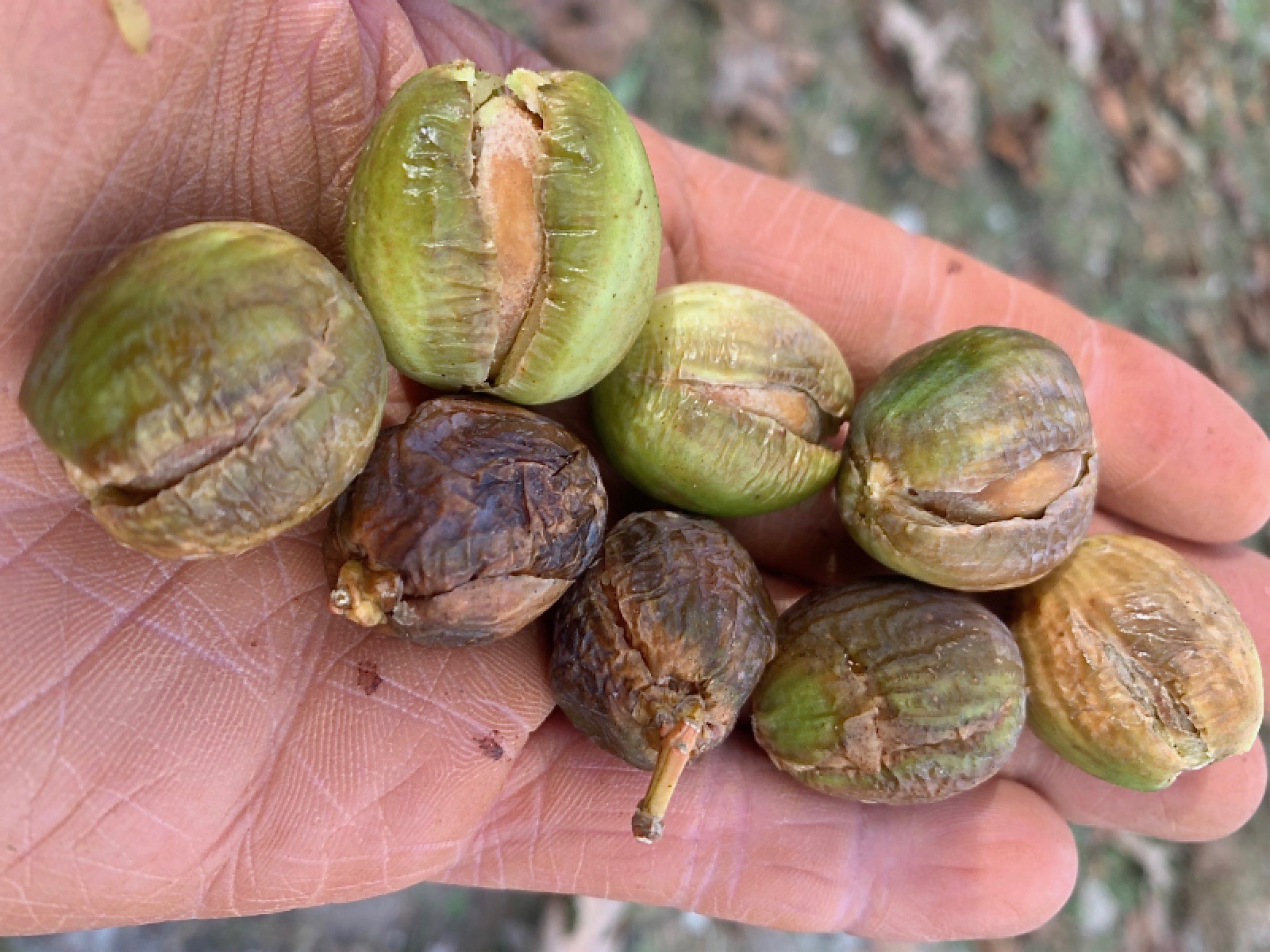
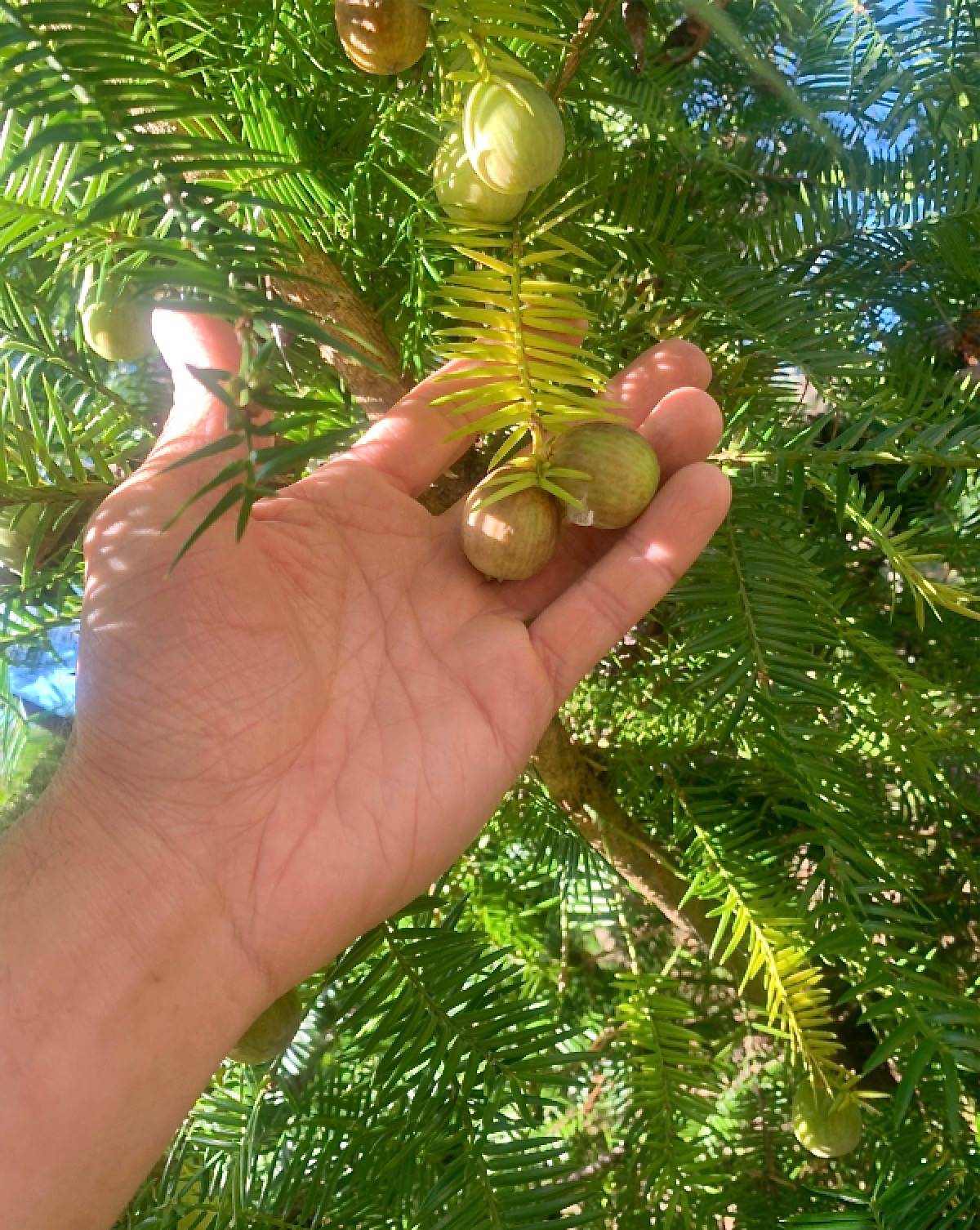
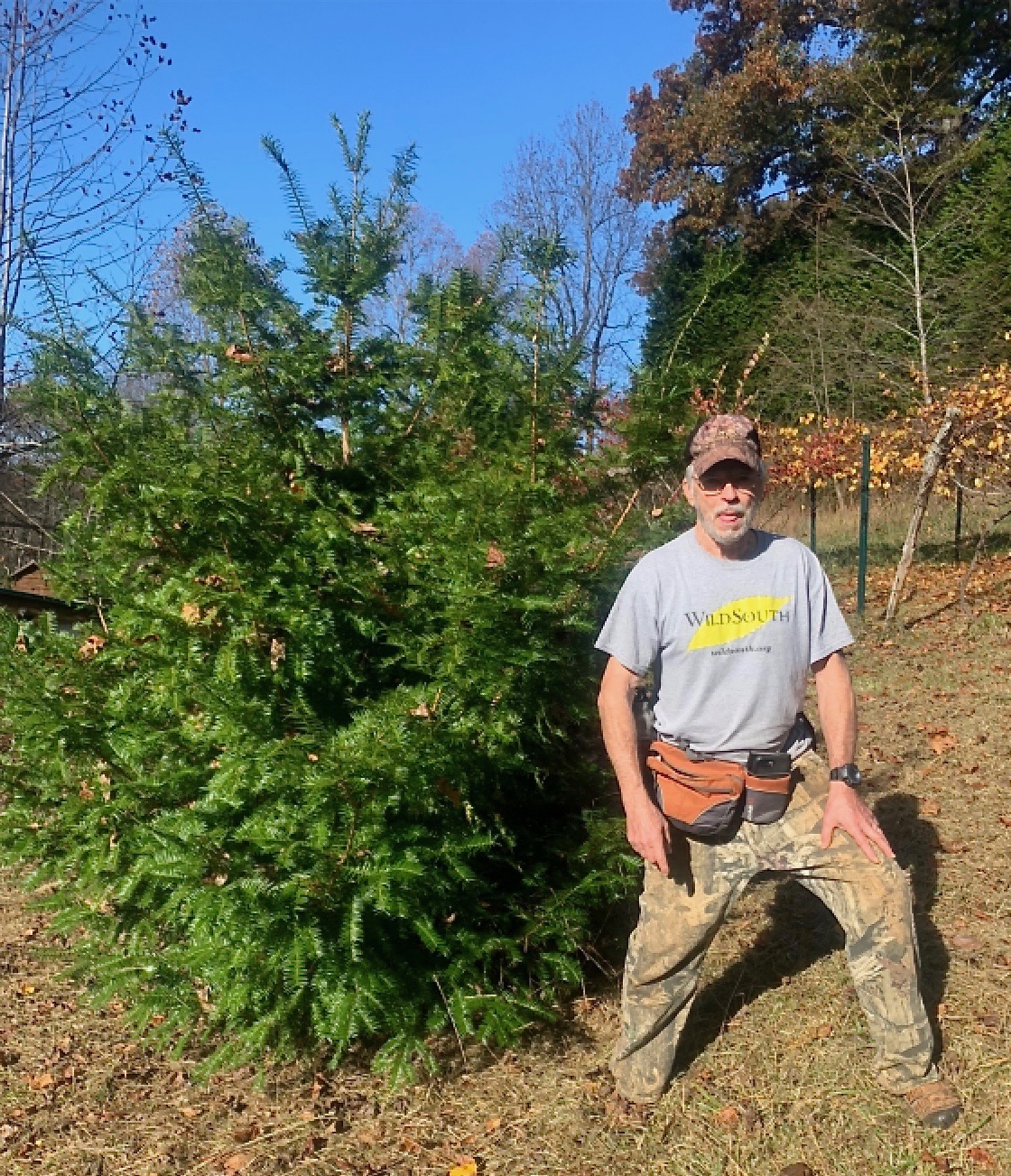
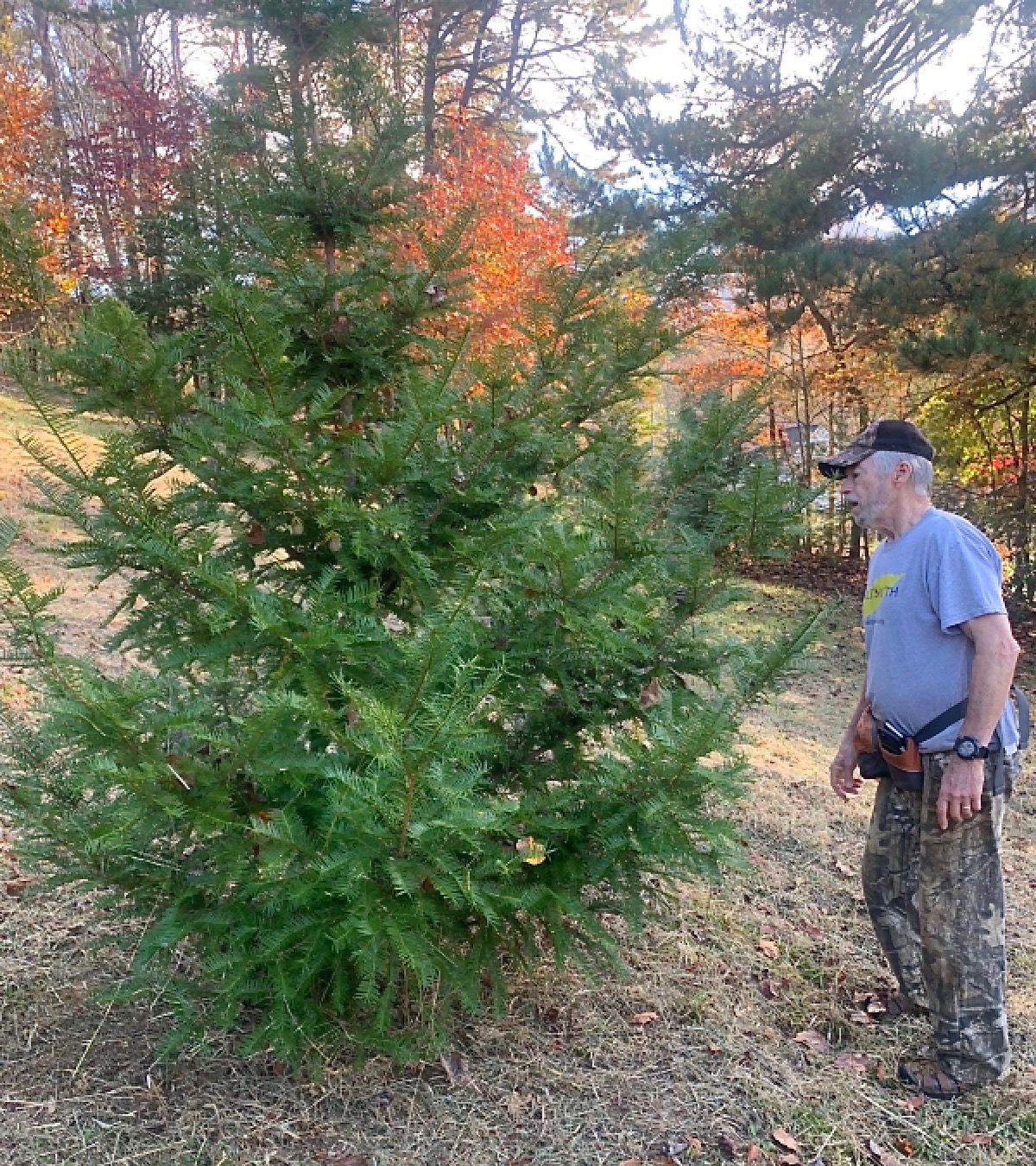
October 2025: Third year of seed production
ABOVE LEFT: Jack Johnston played a crucial role in the initiation of this torreya planting, and in 2025 he returns to help with the harvest. SEED COUNT: approx. 800.
Note: The OCTOBER 2024 report above by Dijon Guite provides the data on the number of torreya trees and the seed-producing component.
|